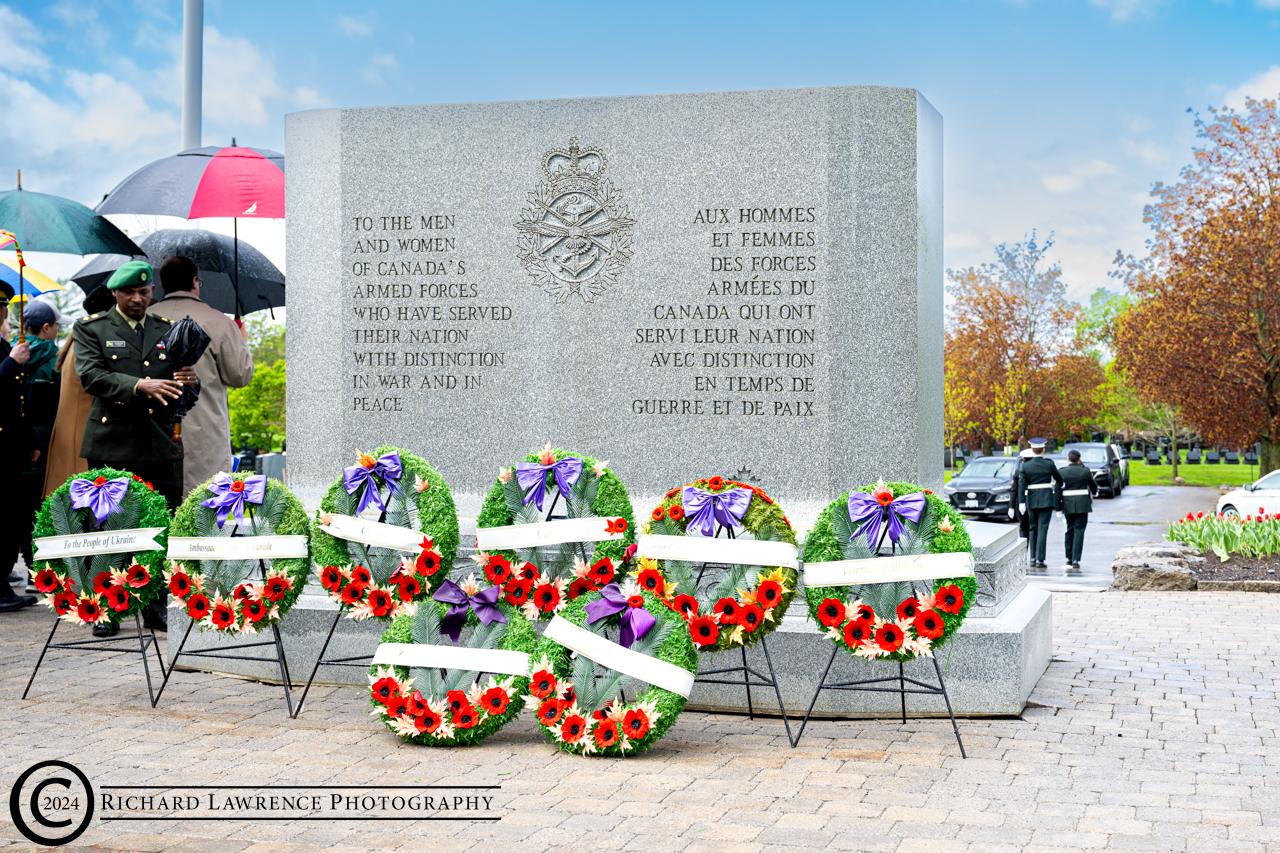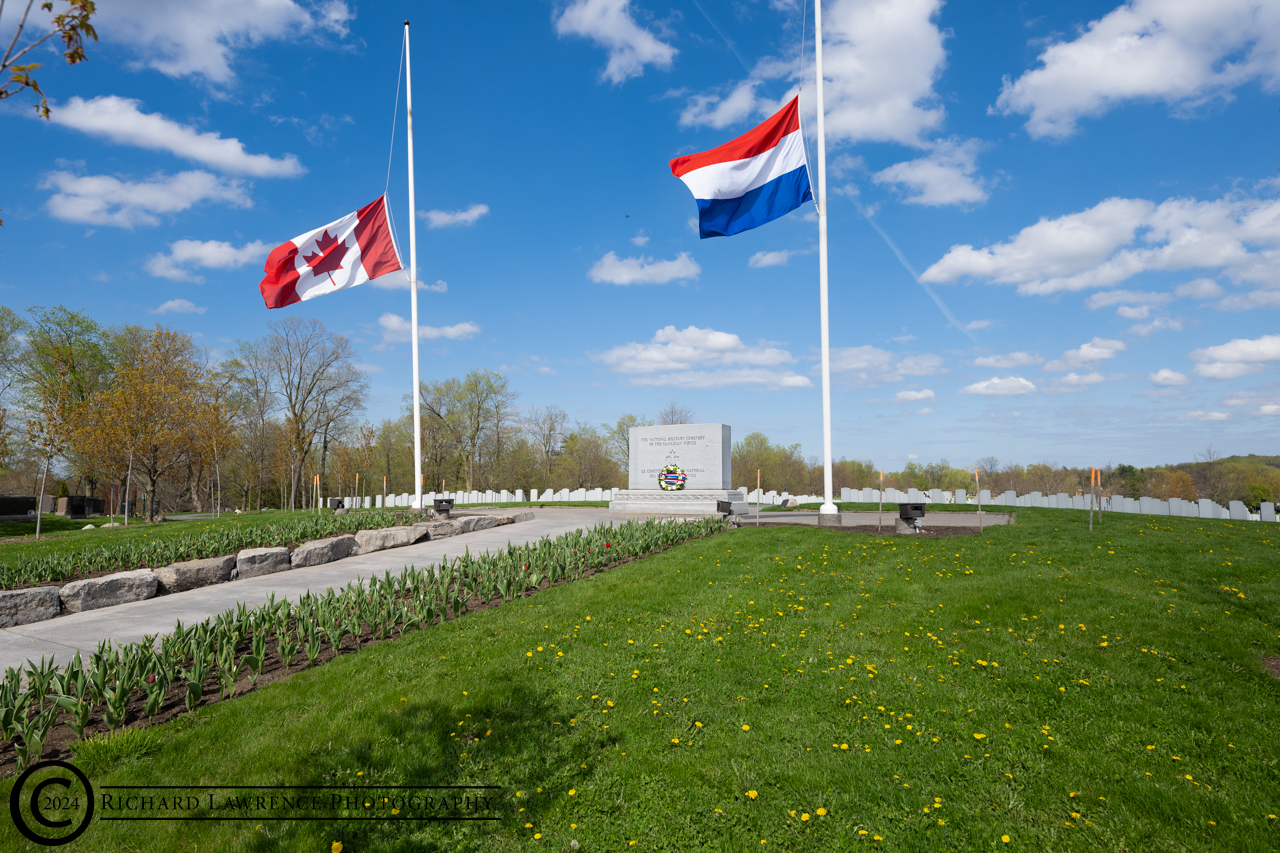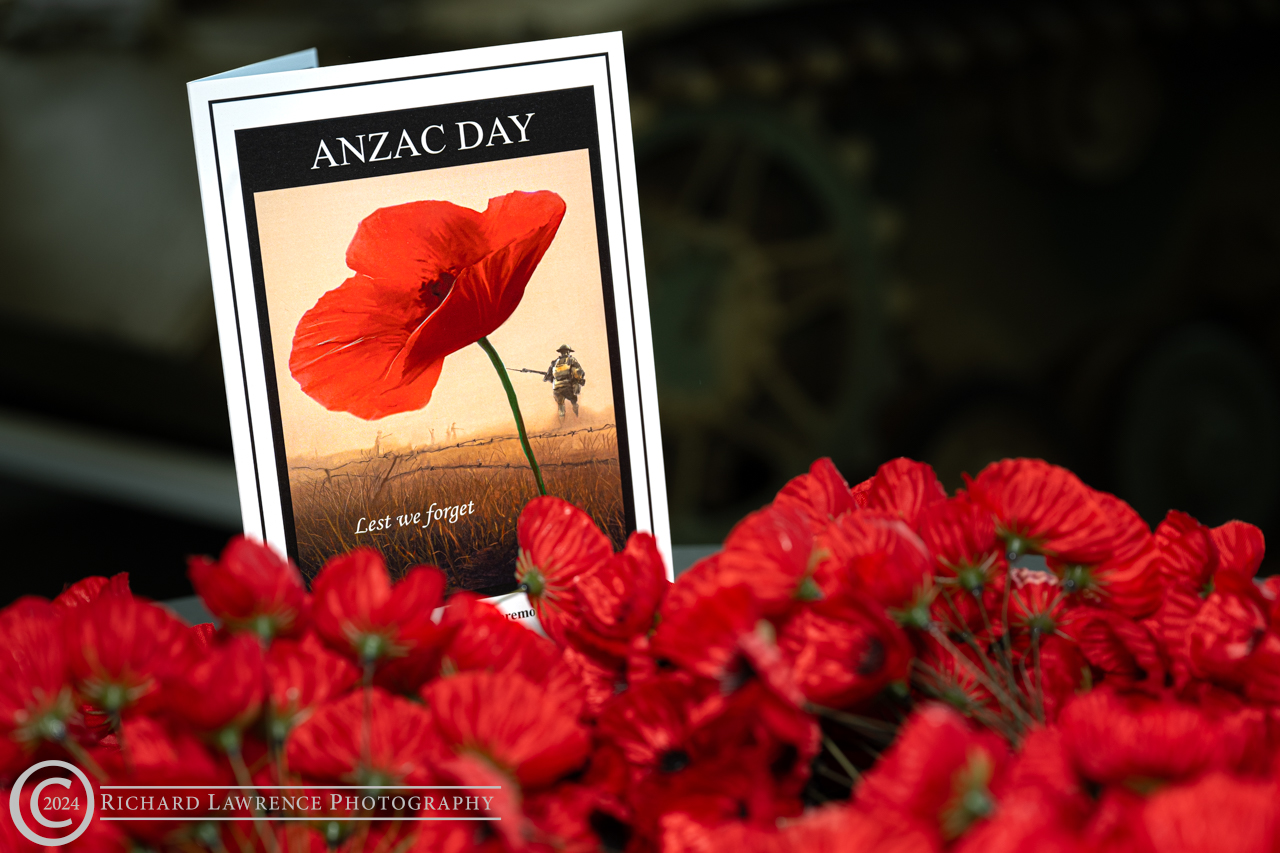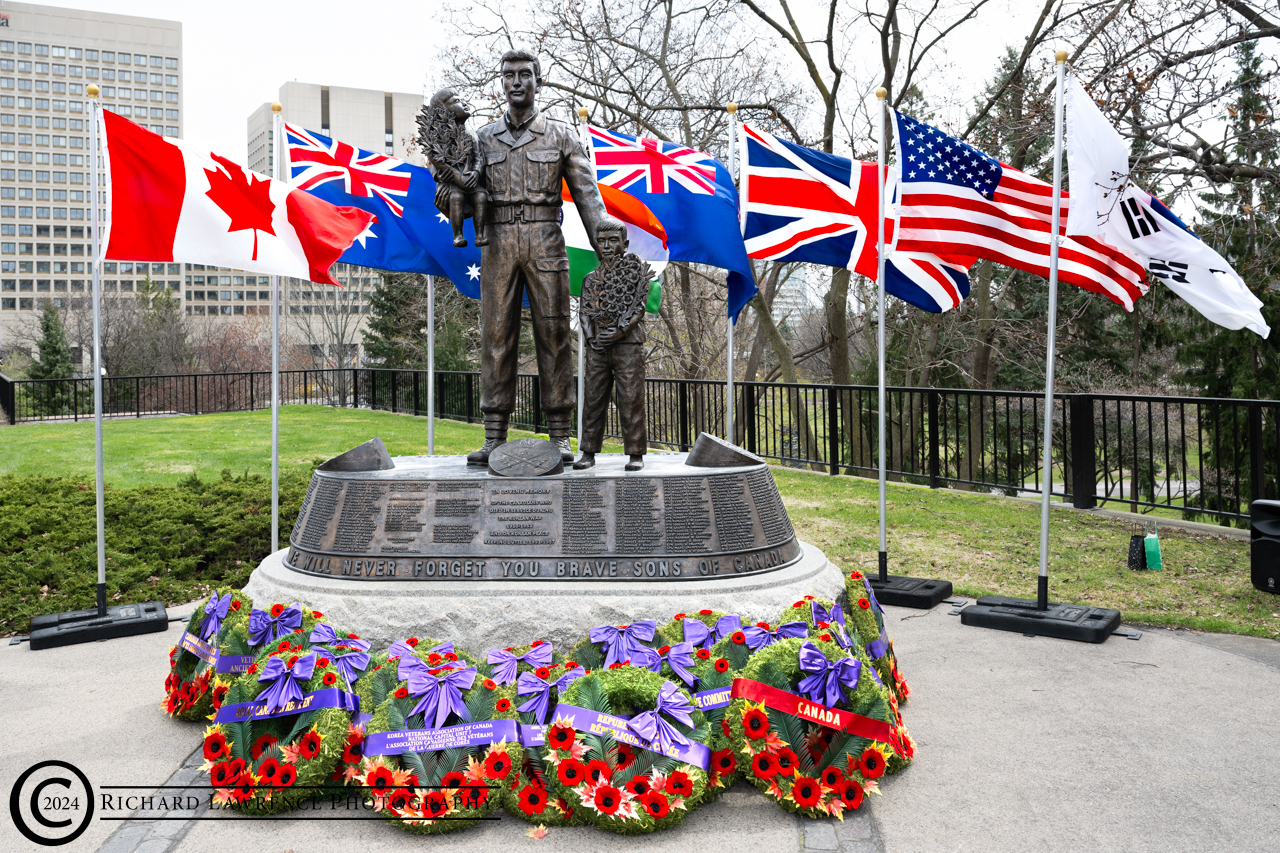Once again the Commemorative Air Force is visiting the Ottawa area as the Arizona Airbase’s North American B-25J Mitchell bomber, “Maid in the Shade”, set down at the Gatineau Executive Airport and taxied over to the Vintage Wings of Canada ramp as part of the “Flying Legends Of Victory Air Show Tour”. This specific aircraft flew fifteen actual combat missions (13 x Italy, 2 x Yugoslavia) from Seraggia Airport on the island of Corsica in November and December 1944 as Battle 18 with the distinctive blue tail and blue ring cowls she now displays. She also participated in America’s first large-scale bombing offensive in the Philippines where “the Maid” is credited with eight ships sunk and five planes shot down. After she retired from the military in 1959 she was used as an aerial pest spray aircraft until 1980 when she arrived at the Arizona Airbase of the CAF (AZCAF) and was in restoration for almost 29 years until her first flight in May 2009.
The B-25 bomber, built by North American Aviation and named after Major General William “Billy” Mitchell, was one of the best known and versatile bombers of the second war. It was a heavily armed medium bomber which served in every theatre of war in roles from bombing, anti-shipping, to tactical ground support. It was an exceptionally sturdy aircraft that could withstand tremendous punishment. One B-25C (nicknamed “Patches “) of the 321st Bomb Group, had the aircraft’s holes patched with the bright yellow zinc chromate primer. At the end of over 300 missions Patches had been belly-landed six times and had over 400 patched holes. The airframe was so distorted from damage that straight-and-level flight required 8° of left aileron trim and 6° of right rudder, causing the aircraft to “crab” sideways across the sky.
Of the nearly 10,000 B-25s produced, there were many variants with this “J” version having over 4,300 siblings. The “C” version (known as the Mitchell Mk II in the RCAF/RAF) would have been most familiar to Canadians, the “G” version had the nose plexiglass replaced with skin and two additional .50 calibre machines added PLUS a 75mm (3 inch) cannon, and the “J” version as a Strafer variant was outfitted with most of its 14 to 18 machine guns facing forward for strafing runs (8 machine guns in the nose position, 2 fixed on either side of the fuselage below the cockpit, and 2 in the dorsal turret). In short, there was no shortage of variations of this aircraft or job it couldn’t be thrown against.
One of the techniques for which the B-25 was known was “skip bombing”. This entailed the bomber to fly between 200-250 feet above ground at 200-250 mph and then drop a stick of two 1,000 pound or four 500 pound bombs that would then skip off the water (like skipping a stone) before hitting a ship and exploding (4-5 second delay fuses) or sinking below the ship and exploding next to her. Mast-height bombing was similar where the B-25 would come in at a slightly higher altitude and faster speed and then drop down to 10-15 feet about 600 yards back of the target. At about 300 yards, the bombs were released into the side of the ship.
The B-25 is most notably known as the bomber selected to make the first air raid against the Japanese home islands in April, 1942. For that raid 16 B-25B Mitchell bombers were stripped down of all unnecessary equipment, including most of the defensive machine guns and ammunition, and launched from the aircraft carrier USS Hornet (for which they weren’t designed) without a fighter escort. LCol. James Doolittle led the 80 man raid for the six hour, 800 mile flight after which they were to go to China to land, another 7 hours. However, one aircraft had issues in flight and diverted to Russia where they were interned and eventually escaped to get home. The 15 other aircraft successfully carried out the raid creating minor damage but a huge success as far as damaging the morale of the Japanese civilian population and boosting the morale of American Troops.
All 15 bombers made it to China where they had to crash land, bailout or ditch and all but two crews (10 airmen) made their way home. Not all crew members made it back with three KIA and eight taken as POWs (3 executed, 1 died). There were also reprisals against the Chinese who assisted the downed airmen with one city, Nancheng, burned to the ground for rendering assistance.
There is a Canadian connection to the B-25 as Canadian aircrew served on them when they served in RAF units which flew the B-25. The RCAF did fly them during WWII but Canadian usage was mostly after the war. The first B-25s for the RCAF were originally destined for the RAF but were diverted to the RCAF and redesignated using the Mark system. These included 1 x B-25B (Mitchell Mk I), 42 x B-25C (Mitchell Mk IIs), and 19 x B-25J-NC (Mitchell Mk IIIs).
No 13 (P) Squadron was formed at Rockliffe in May of 1944 where they operated Mitchell Mk IIs on high altitude aerial photography sorties and became No 413 (P) Squadron in April 1947, flying the Mitchell until October, 1948. In January, 1947, No 418 (Auxiliary) Squadron received its first Mitchell Mk IIs, operating a mix of Mk IIs and Mk IIIs until March, 1958. No 406 (Auxiliary) Squadron flew Mitchell Mk IIIs from April 1947 to June 1958 with No 12 Squadron of Air Transport Command flying Mitchell Mk IIIs from September 1956 to November 1960. No. 5 OTU (Operational Training Unit) at Boundary Bay, British Columbia and Abbotsford, British Columbia, operated the B-25D Mitchell in the training role together with B-24 Liberators for Heavy Conversion as part of the BCATP.
In 1951, the United States Air Force provided the RCAF with an additional 75 x Mitchell Mk IIIs (B-25J) so that second-line units could be equipped and to help alleviated shortages caused by attrition. In all, 164 B-25s served with seven RCAF squadrons in light bomber, navigation training, photo recon, and transport roles.
On a personal note, I had the good fortune to be selected to go for a ride in the “Maid” as part of a media flight and because I’m a veteran. My position was as the left hand waist gunner. From the pictures you can see that there were four of us in this space which normally accommodated two. As well, we had seats which the gunners would not have had, having instead to sit on their parachutes for the entire journey. After a flight briefing by AZCAF’s Ted Lloyd we got into the aircraft’s waist via a ladder just aft of the bomb bay and then wrestled into seats and seatbelts and waited … and sweated … and waited and sweated. It was a hot day with high humidity and there is no air movement in the waist until the engines start and the B-25 starts to taxi. As the engines turned over, we all put on ear protectors as the B-25 is noisy, so much so that just ear plugs are not deemed sufficient. The first smell is that of exhaust as we are seated just behind the engines but that clears soon enough as you start moving and you start to get some airflow into the cabin. The taxi out to take-off position is not much different than any other aircraft, other than it is 74 years old.
Once the take-off roll started, I was surprised by how much I was pushed into the back of my seat as I expected something gentler. After passing V1 and Vr speeds she jumped up in to the air and started a gentle climb for a couple of seconds and then did what felt like a 60 degree turn. Again, more abrupt than I would have expected. What I gathered from this little bit of experience is that this aircraft handles very nimbly and that the pilots have no compunction about throwing it around the sky.
A couple minutes into the flight, Ted gave us the OK to unbuckle and I was allowed to crawl from the waist position to the rear gunner position in the tail. And that’s the only way you can get there is on your belly. It’s a small little seat about 12-16 inches off the floor with the machine guns at knee level. Your head sticks up into a blister so you can see targets but your field of view is limited, especially if you’re shorter than six feet. The others moved about standing at the waist gun positions tracking whatever they could see with the guns. A few minutes of this and all of a sudden, we’re bidden back to our seats by Ted as we’re starting to setup for landing. It’s surprising how fast a 25 minutes flight goes by.
I must say that the experience is not a lot different than flying in any other airplane EXCEPT that when you think of it in a historical perspective. You see how these young men, 18, 19, 20 years old with no worldly or life experiences yet, were crammed in together and sent up into the air to bomb another country – to execute government sanctioned killing. Imagine being airborne for hours, knowing that fighters were going to come at you for hours and that you only carried a limited supply of ammunition. Knowing that they could weave all over the sky at double your speed and that you were essentially a sitting target travelling straight and level. Knowing that anti-aircraft fire could bring you down in seconds. Put that together with an uncomfortable working environment, whether it be heat on the ground or cold in the air, and machine gun cartridges bouncing all over the aircraft’s inside as you blazed away hoping to hit a moving target and not even having enough room to fully traverse your gun without hitting your buddy on the opposite side. Take a look at the structure of the aircraft from inside and realize what a flimsy vehicle this is to do the job that it has been assigned. I can only commend the courage of any man who would go up and do this a second time. Most went up dozens of times without a second thought. Many didn’t return.
As a last historical note, I noticed that the bomb bay doors had a lot of graffiti on it and upon closer examination saw that it was inscriptions from men who had actually flown B-25s. It was pointed out to me that two of the signatures were of aircrew of the Doolittle mission, Ed Sayler (crew #15) and David Thatcher (crew #7). It’s worthwhile just to sit there a read the names for a minute or two.
I’d like to express my thanks to Corey Paul and her staff for their excellent service and response times in providing information to me and for thinking to include me in the media flight as a veteran. I’d also like to thank Ted Lloyd for getting me to the tail gunner position in flight, something I’m sure he didn’t have to do, and also thanks to Paul Hlavaty for letting me up into the cockpit once she was on the ground, again something he didn’t have to do. The Arizona Commemorative Air Force Museum (AZCAF), based in Mesa, Arizona, is one of 86 different airbases, wings, squadrons, and other unit types comprising the Commemorative Air Force organization that fly and house the largest collection of flying vintage aircraft in the world. The CAF is the nation’s leading organization devoted to preserving American military aviation history through education, flying and exhibition.
to see all the pictures, CLICK HERE
=================================================

























